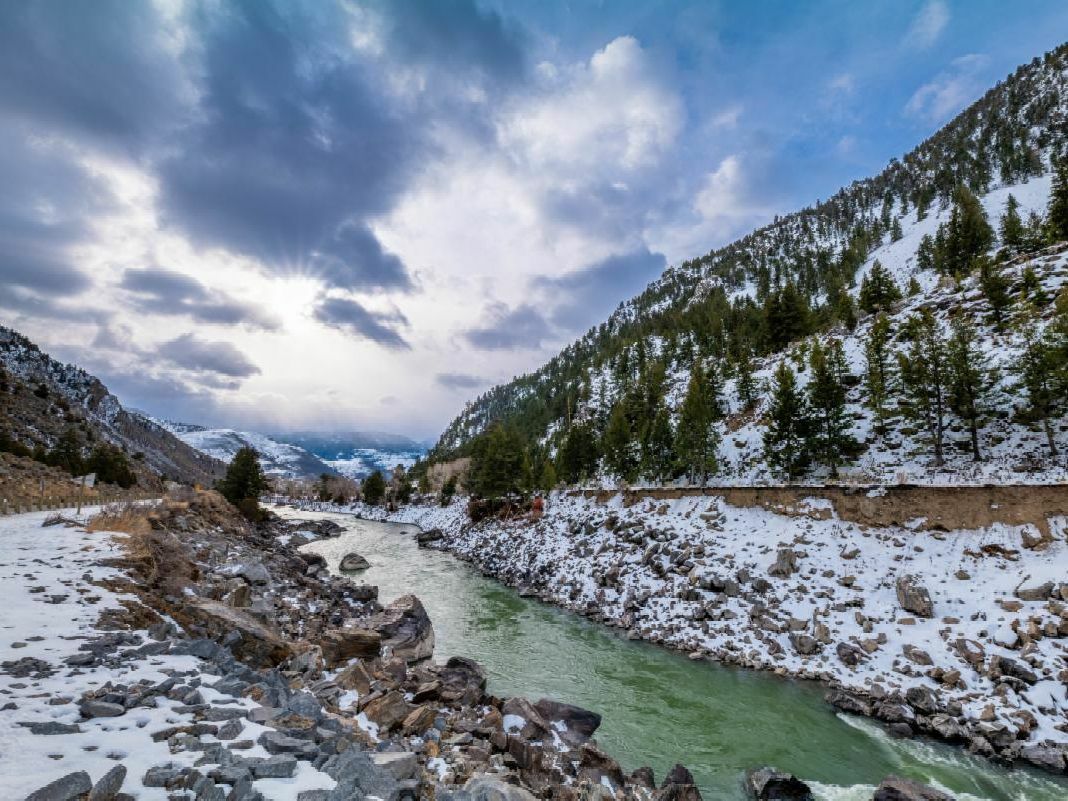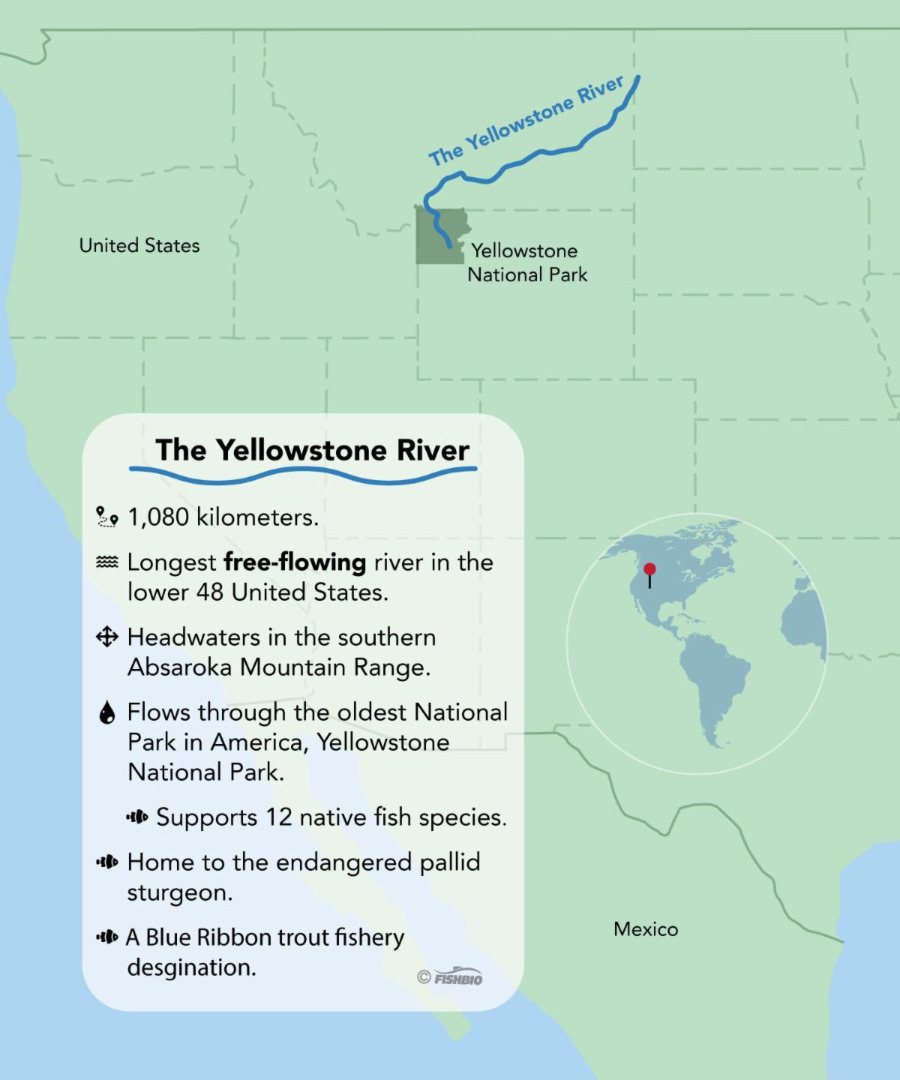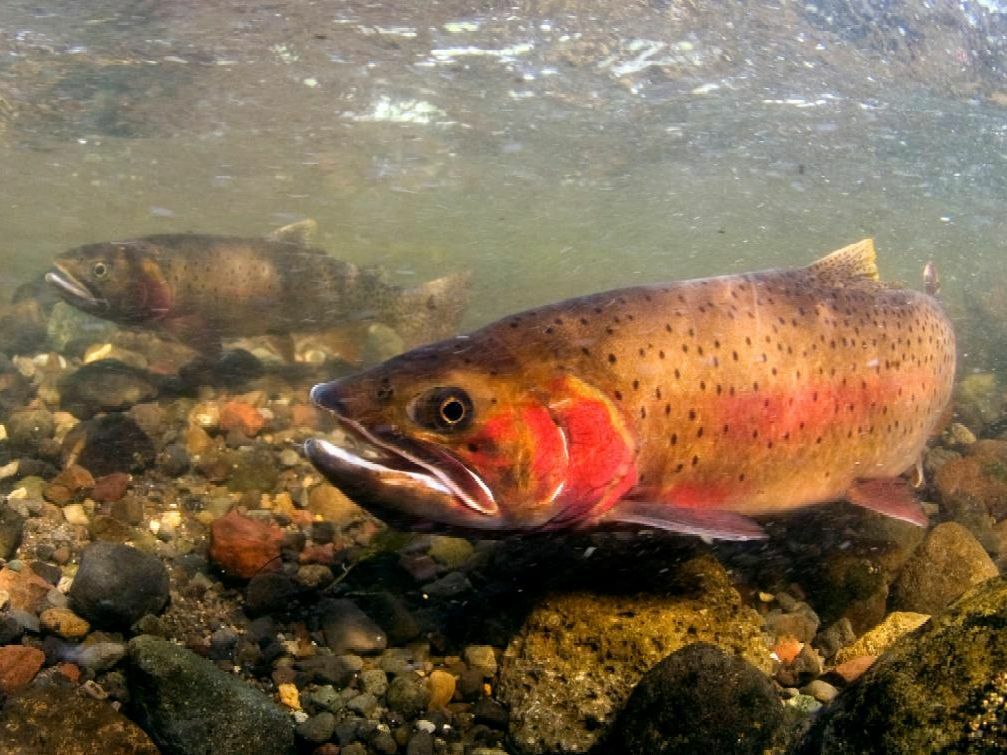From Sportfishing
Fish Report for 5-20-2024
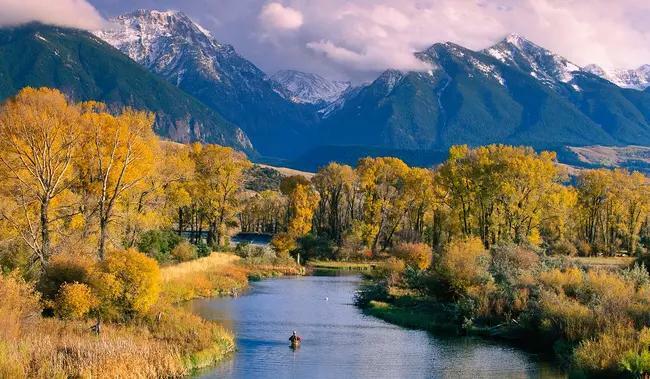
Wild Rivers: The Yellowstone – A Free Flowing Fish Paradise
5-20-2024
FISHBIO
Yellowstone National Park was established as the United State’s first national park in 1872. Its stunning landscapes, covering approximately 2.2 million acres, are home to a diverse range of wildlife. Although a relatively small portion of the Yellowstone River actually flows through the park, this river is just as wild and diverse as its namesake. It is the longest free-flowing river in the lower 48 states, meandering unobstructed for 1,080 kilometers (~670 miles) from its origin at Younts Peak in Cody, Wyoming to its mouth at the Missouri River confluence in North Dakota. Within Yellowstone National Park, boating is prohibited on rivers, leaving over 400 miles of relatively unexplored and pristine waters. The Yellowstone River flows through many different habitat types from valleys surrounded by picturesque mountain ranges to dramatic, steep waterfalls that drop off into the Grand and Black Canyons. Paradise Valley is an especially scenic reach of the river, offering over 100 miles of fishing and floating opportunities. The Yellowstone River is home to popular sportfish like the Yellowstone cutthroat trout (Oncorhynchus clarkii bouvieri) in the Blue Ribbon trout fishery of the upper river, and ancient fishes like the American paddlefish (Polyodon spathula) and endangered pallid sturgeon (Scaphirhynchus albus) in the lower river. Many other animals benefit from the river as well including whitetail deer, elk, black and grizzly bears, and bald eagles.
Although the Yellowstone River is currently dam-free, it is not immune to other human-induced alterations. The introduction of non-native fish species has been especially detrimental to the river’s native cutthroat trout populations. Rainbow trout (Oncorhynchus mykiss), brook trout (Salvelinus fontinalis), and brown trout (Salmo trutta) are all non-native species that were stocked in the Yellowstone River in the late 1800s. Brook and brown trout often outcompete Yellowstone cutthroat trout for habitat and food sources, and non-native rainbow trout pose the additional risk of hybridization with Yellowstone cutthroat. This hybridization is particularly concerning, as it directly diminishes Yellowstone cutthroat trout reproductive success.
Poor floodplain development strategies are also an ongoing challenge for the Yellowstone River. Channelization of the river through the construction of levees and rip-rapping of banks has separated the river from its historic floodplain, habitat which is especially important for juvenile fish rearing. These alterations have earned the Yellowstone River a place on America’s Most Endangered Rivers® list in 1995, 1999, and 2006. Oil pipelines have also proven dangerous for the health of the Yellowstone River and surrounding ecosystem. Two separate spills in 2011 and 2015 due to ruptured pipelines directly impacted fish and wildlife that reside in or near the Yellowstone River.
Undammed rivers are becoming increasingly rare in the U.S. with only about 0.4% of the country’s total river mileage still considered free flowing. Conservationists work tirelessly to protect the Yellowstone River from the ever looming threat of dam construction. In the 1970s, construction of the Allenspur Dam was proposed to create a reservoir that would provide water for future coal power plant projects near Livingston, Montana. The reservoir created by this dam would have flooded most of Paradise Valley, significantly impacting the Yellowstone watershed and overall ecosystem health. Fortunately, these plans were abandoned thanks to local grassroots movements that worked to research and document the many fish and wildlife species that rely on the free-flowing nature of the Yellowstone River to survive. Unfortunately, in 2018, an injunction was lifted that blocked proposed construction of a new concrete dam on the Lower Yellowstone River. The purpose of the dam is to divert water for irrigation of 54,000 acres of crop land. The dam, if constructed, will significantly obstruct fish passage, which is especially concerning for endangered migratory species like pallid sturgeon. A bypass channel for fish movement was proposed along with the dam, but scientists are not confident that fish will regularly use the bypass.
In 2021, the Greater Yellowstone Coalition along with many diverse partners and organizations, introduced the Montana Legacy Headwaters Act to the United States Congress. This bill, if passed, will protect 384 river miles across the state of Montana, including portions of the Yellowstone River. Although the future of the river may be uncertain, it is encouraging that environmental organizations and conservation-minded citizens continue the fight to keep the Yellowstone River as wild as possible.
FISHBIO is a dedicated group of research scientists, engineers, and technicians that specialize in counting, tracking, and analyzing trends in fish and wildlife populations throughout the world. An expert staff, technical capacity, and state-of-the-art equipment make FISHBIO a trailblazer in aquatic research. For more information, please visit FISHBIO.com
Photos
< Previous Report Next Report >
More Reports
Fall-Run Chinook Salmon Fry Succumb to Gas Bubble Disease in Klamath River
Klamath River - Upper - CA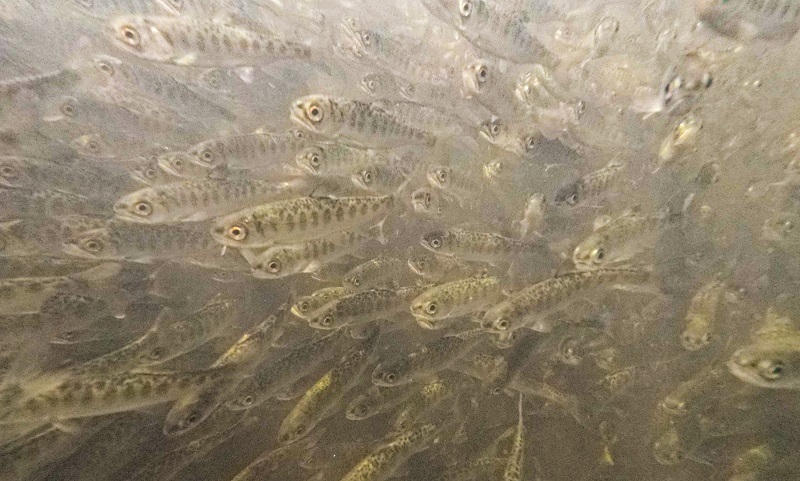
3-1-2024
The California Department of Fish and Wildlife (CDFW) announced today that fall-run Chinook salmon fry released for the first time...... Read More
Salmon with a Side of Lamprey: Non-native Basses Primarily Eat Native Fishes in California's Stanislaus River
Stanislaus River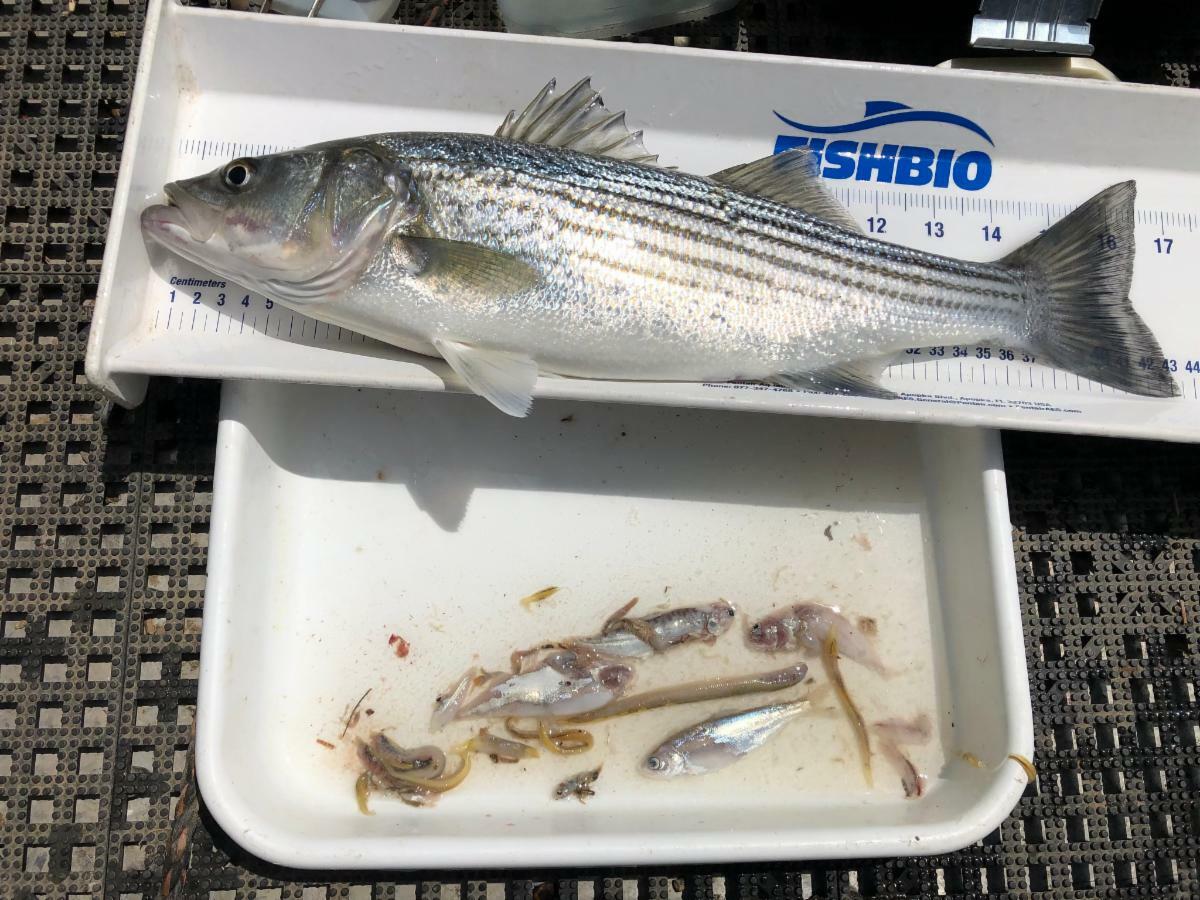
2-19-2024
Salmon face many perils during their migration to the ocean, including disease, entrainment, degraded water quality, and predation. However, predation...... Read More

Website Hosting and Design provided by TECK.net
